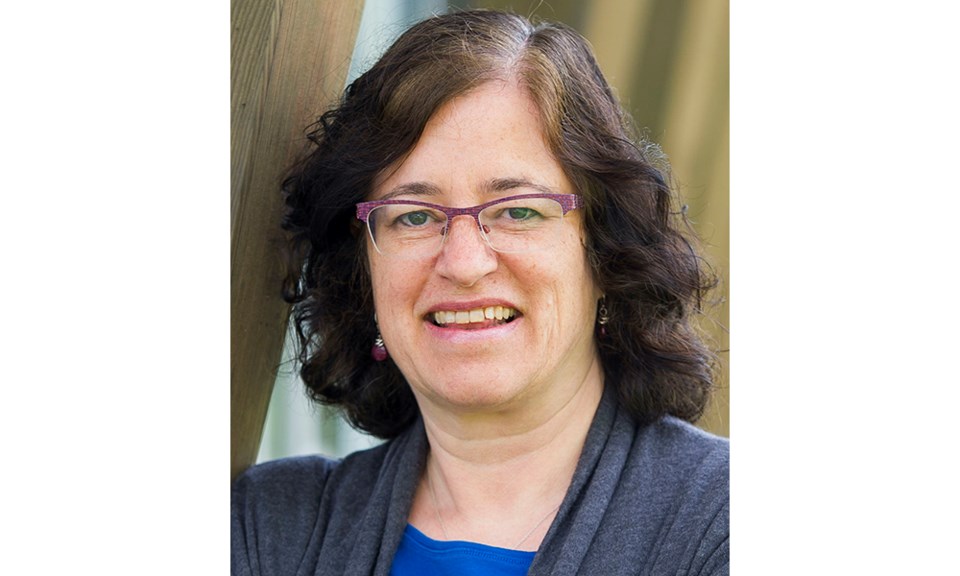Just before school started, I wrote that I would have to eat my words, after mandatory masking, cohorts in schools and remote options that allow students to stay connected to their schools were not reintroduced for this school year.
But now, I’m having the worst kind of an “I told you so” moment, as Provincial Health Officer Dr. Bonnie Henry recently announced a “concerning trend” in which COVID-19 cases in school-age children younger than 12 are “going up quite dramatically.”
The number of school-age children being tested for COVID-19 has exploded from 100 a day to about 500 a day, she said. The vast majority of these are not positive for COVID-19, but other respiratory viruses are growing with the reopening of schools.
Dr. Henry had said the safety measures in place last year worked and would be repeated this year. However, that ignored the increased transmissibility of the Delta variant and the fact that cohorts and online options that allow students to be connected with their local school would not be in place this year. Also, masks were not mandatory for children in grades K to 3, all of whom are unvaccinated.
The Vancouver and Surrey School Boards voted this week to make masks mandatory for all grades, and on Friday, the province followed suit.
“This pandemic continues to evolve and so do we,” said Dr. Henry. “We need to make changes to fit the situation as it's arising. We know the COVID-19 virus is being transmitted more rapidly, particularly to those who don't have the protection that vaccination offers. This extra measure adds another layer of protection as we navigate this phase of the pandemic.”
While I applaud this new rule, it seemed obvious to me in August that masks were needed for all students. I also suspect that most of these young kids were already wearing masks and that this won’t make a huge difference in slowing down spread.
Last year, when online options that kept students attached to their local schools were available, that naturally made in-school classes a bit smaller, which allowed some physical distancing. Without that layer of protection, it’s inevitable cases in schools will grow as cases in the community grow.
At first, Dr. Henry said exposure notifications would not be sent out this year, but parents pushed back hard.
“It makes it impossible to know what decision to make day-to-day for my at-risk family when the tools to make informed decisions are removed by the very people who are employed to protect our health and help us navigate the pandemic,” said Vancouver parent and Safe Schools Coalition BC organizer. “I do not understand what their priorities are any longer.”
The group sent freedom of information requests seeking information about in-school exposures in 30 of the province’s school districts.
On September 28, Dr. Henry announced that exposure notices would not be sent out to all parents, but would be posted on health authority websites. She acknowledged that parent groups, like the BC School Covid Tracker, might be quicker at getting notifications posted. The tracker is run by volunteer parents and by Sept. 28, they had counted 513 COVID-19 exposures in schools. Something seems off to me when our top doctor says a small group of volunteers can get critical health information into the public sooner than the government.
It’s not only notifications that are seeing long waits – testing centres are also backed up, which could skew positivity numbers if people cannot get access to testing. Surrey school district superintendent Jordan Tinney said gargle test kits will be promoted for students who come down with COVID-19 symptoms at schools. Without cohorts or remote options that keep students connected to their local schools, rapid testing should be an essential part of keeping schools safe.
Outside the K-12 system, there are also unvaccinated children in preschools and daycares who will also probably see cases grow. The university sector is also an untested situation, after last year’s classes were nearly all online. It remains to be seen whether already high numbers of cases will grow in people between the ages of 19 and 29.
So, where to from here? Even with the expanded mask mandate, I expect some schools or classes will have to pivot to online learning for at least some portions of the school year.
It’s crucial that information be transparent and timely, so that people can assess their own risks and benefits. Given the turnaround on school exposure notifications and the recent revelation that people in hospital with COVID-19 who are no longer infectious are not counted in daily hospitalization numbers, openness and transparency of information is absolutely an issue in B.C.
The more information, the better. Parents and their children deserve it. As much as I don’t want to eat my words, I very much prefer that to saying I told you so.
Tracy Sherlock is a freelance journalist who writes about education and social issues. Read her blog or email her [email protected].



